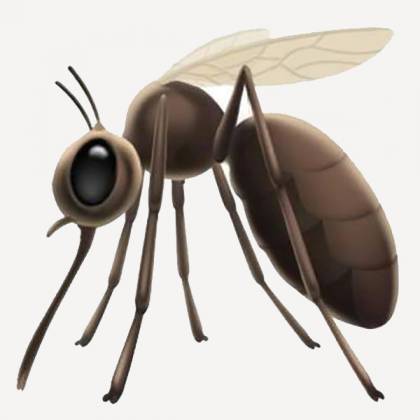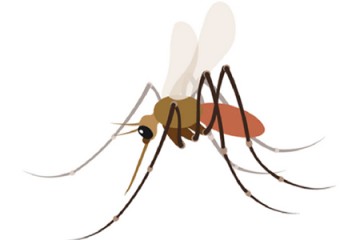In the summer of 2017, with another outbreak of Zika virus possible, Marla Shaivitz was busy sending out tweets. Her posts contained links to communication and community engagement guides that ministries of health, NGOs, and international health organizations could use to prevent and control the virus. If she had wanted to include an emoji to attract attention to her posts' subject matter, she couldn't. At the time, there were icons for bees, frogs, beetles, and a menagerie of other critters, but none representing the most dangerous animal on earth, the mosquito.

"I thought it would be so much more effective to insert an emoji in a tweet or social media post to quickly alert people [to] what it was about," says Shaivitz, who was then a digital communications manager for the Health Communication Capacity Collaborative based at the Johns Hopkins Bloomberg School of Public Health's Center for Communication Programs. She pitched the idea to the Unicode Consortium, the nonprofit governing body that determines which emojis are added each year.
In her proposal—on which she collaborated with Jeff Chertack, a senior program officer for malaria advocacy and communications at the Bill & Melinda Gates Foundation—Shaivitz contended that the emoji could be used by public health practitioners to help reach across cultural and language barriers in order to warn the public about outbreaks of mosquito-borne diseases. These illnesses, including malaria, Zika, dengue, and yellow fever, contribute to more than a million deaths and many more ailments annually.
Word of the proposal spread. Other health organizations, such as UNICEF and the Global Fund, that might find a mosquito emoji useful in their own communications advocated for its approval through social media campaigns. "The global health community really did get behind it," says Shaivitz, now director of digital strategy at the Center for Communication Programs.
Video credit: Johns Hopkins CCP
Last February, the Unicode Consortium announced the design would become one of 157 new characters for 2018, finding a home among a lobster, a test tube, and a head of broccoli.
The consortium comprises executives from tech giants, including Google, Microsoft, and Apple. Each year, they decide which proposed emojis make the cut, based on such factors as distinctiveness, anticipated usage, and whether something similar already exists. The group's roots date back to the late 1980s, when a team of computer engineers from Apple and Xerox realized they needed a standardized code for text characters in order to communicate across computer platforms. The Unicode Standard was born. Emojis are part of that code. And though the sometimes quirky icons may appear silly or trivial, they've become a key part of how people communicate. They've also become cultural touchstones. Last year, London's Victoria and Albert Museum announced that it would be adding the mosquito emoji to its collection of popular culture paraphernalia.
The mosquito emoji can be used by anyone, of course, and Shaivitz thinks it will have broad appeal outside the global health community. Local health departments could use it to warn people about removing standing water where mosquitoes often lay eggs, she says. Outdoors enthusiasts might post a message to remind friends to bring bug repellent on their next camping trip. Or, perhaps, Facebook users will post it as a subtle hint: "You're bugging me."
Posted in Health









